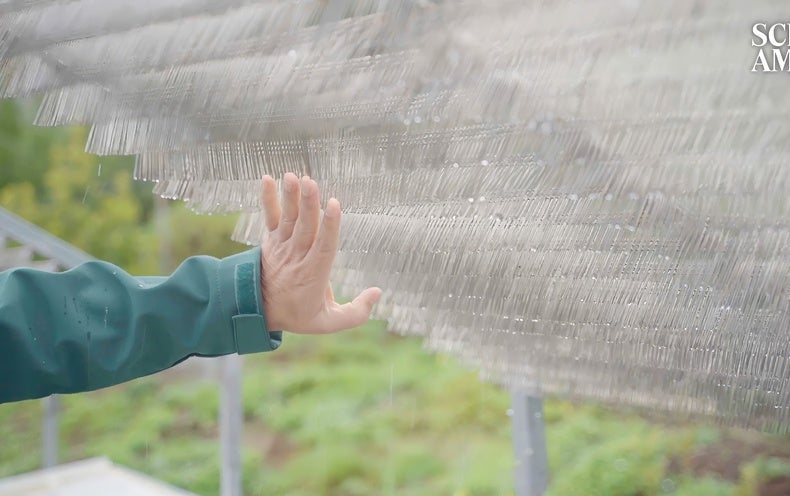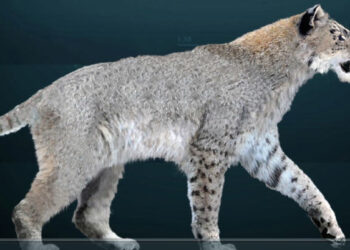This story was generously supported by a grant from the Pulitzer Center.
TRANSCRIPT
Gustavo Viera Ruiz: The foggy areas of the Canaries support a very special forest, which is Laurisilva.
I mean, we’re talking about a forest that the dinosaurs saw in their day.
Here we have firetree. Thanks to its roots and the symbiosis it has with a fungus, it enriches the soil where it’s planted.
Here we have another type, heather. It makes needle-like leaves.
Look, you can see these lichens. And what this does is increase the surface area. And that greatly increases the amount of water that can be captured from fog. And it permeates the soil.
What happened? The forests have been destroyed and this cycle no longer exists.
What we’re trying to do with this project is to use devices that imitate what the vegetation does.
And use the water collected for environmental restoration work. But if we’re not able to restore these forests, the desert will keep advancing.
And it will snowball. More desert, less water. More issues for the population. More issues for farmers, for biodiversity.
The fog catchers imitate what nature does. But nature always does it much better.
What’s strange about the Canary Islands is that they’re at a latitude that should be desert. We’re right in front of the Sahara Desert. But this archipelago, being in the ocean, on one hand that tempers the temperature.
And on the other hand having trade winds and having altitude makes these humid winds from the north condense when they rise up to the mountains. And in condensing, they form this fog that generates humidity.
There are islands like the island of El Hierro, which is a very young island, only 1 million years old. And it’s very porous volcanic terrain, which means that all the rain that falls is lost.
The indigenous people of El Hierro had a tree that they called the Sacred Tree. And because it was always dripping, they had water and used it for drinking. And those were…
Read the full article here







